Weekly Current Affairs (22nd to 30th June 2025) | General Test Preparation for CUET UG - CUET Commerce PDF Download
Fossil Fuel Finance Report 2025
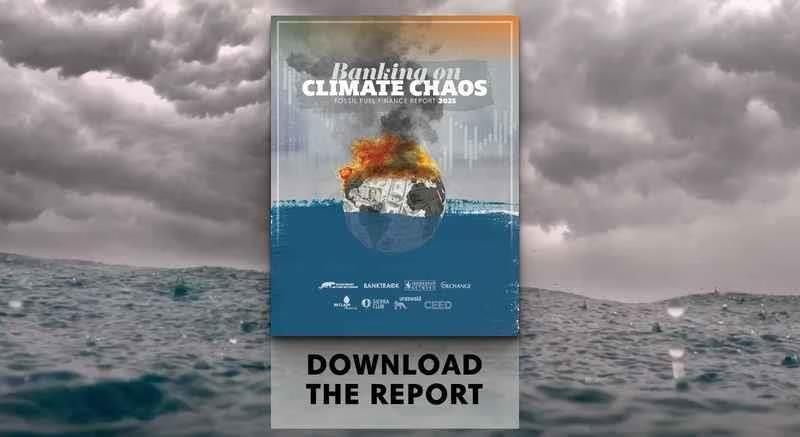 Why in News?
Why in News?
- The Fossil Fuel Finance Report 2025 highlights a significant increase in global financing for fossil fuel companies, raising alarms about sustainability and climate commitments. In 2024, the world's 65 largest banks committed $869 billion to fossil fuel industries, up from $707 billion in 2023.
Key Takeaways
- The total fossil fuel financing by major banks increased significantly from 2023 to 2024.
- The State Bank of India (SBI) played a notable role, rising in rank among fossil fuel lenders despite its commitment to achieve net zero emissions by 2055.
- There is a concerning trend of major banks, including European institutions, backtracking on climate finance commitments.
- The political climate has influenced financing patterns, particularly in the United States.
Additional Details
- State Bank of India (SBI): In 2024, SBI's financing for fossil fuels grew by $65 million, totaling $2.62 billion. This positioned SBI as the 47th largest lender in fossil fuel financing, an improvement from 49th in 2023.
- Comparative Financing: JPMorgan Chase led with $53.5 billion to fossil fuel companies, surpassing SBI's total financing from 2021 to 2024 of $10.6 billion.
- Indian banks face criticism for their coal financing policies, with only two having explicit coal exclusion strategies, despite coal becoming less economically viable compared to renewables.
- The report underscores a global pattern where even traditionally progressive European banks are increasing fossil fuel investments.
- Political decisions, like the US withdrawal from the Paris Agreement, have exacerbated the trend of increased fossil fuel financing.
As the world's reliance on fossil fuels continues to grow, the need for a shift towards sustainable financing becomes increasingly urgent. The report indicates that since 2015, banks have committed $7.9 trillion to fossil fuel financing, posing serious challenges to global climate objectives.
US Attacks Iran’s Nuclear Facilities
 Why in News?
Why in News?
- The recent military actions by the United States against Iran's nuclear installations have significantly heightened tensions in the Middle East. On June 22, 2025, President Donald Trump announced the destruction of three critical nuclear sites: Fordow, Isfahan, and Natanz. These facilities are essential for uranium enrichment, a process pivotal for both nuclear energy production and the development of nuclear weapons. This situation raises serious concerns regarding nuclear safety, potential radiation leaks, and broader geopolitical repercussions.
Key Takeaways
- The US targeted three significant nuclear facilities in Iran.
- Uranium enrichment processes are crucial for nuclear energy and weaponry.
- Concerns about nuclear safety and geopolitical tensions are escalating.
Additional Details
- Uranium Enrichment: This process involves increasing the concentration of Uranium-235 (U-235) from natural uranium, which primarily consists of Uranium-238 (U-238). While enrichment levels of 3-5% are sufficient for nuclear power generation, weaponization requires highly enriched uranium (HEU) at 90% or more U-235. The recent attacks focused on facilities crucial for producing HEU, heightening fears about nuclear proliferation.
- Differences Between Nuclear and Conventional Weapons: Nuclear bombs fundamentally differ from conventional explosives. Traditional bombs rely on chemical reactions triggered by impact or heat, whereas nuclear bombs derive energy from nuclear fission. This process generates enormous energy, resulting in powerful blast waves and electromagnetic radiation. Nuclear detonations are typically designed to occur in mid-air to maximize destructive potential.
- Risks of Nuclear Explosions and Radiation Leaks: Although the likelihood of a nuclear explosion from the US strikes is low, the risk of radiation leaks remains a significant concern. Nuclear facilities contain various radioactive materials that may pose health risks if released. The International Atomic Energy Agency (IAEA) reported no immediate increase in off-site radiation levels after the attacks, indicating that safety measures may have effectively mitigated potential dangers.
- Historical Context of Nuclear Accidents: Historical incidents like Chernobyl in 1986 and Fukushima in 2011 highlight the catastrophic consequences of radiation leaks, leading to widespread contamination and public health crises. The ongoing conflict surrounding the Zaporizhzhia nuclear power plant in Ukraine further illustrates the vulnerabilities of nuclear facilities in conflict zones.
- International Oversight: The IAEA plays a vital role in monitoring global nuclear activities. Their swift assessment of the situation in Iran underscores the importance of international oversight in preventing nuclear disasters. The geopolitical implications of these attacks are profound, likely impacting diplomatic relations and security strategies in the region.
The recent military actions by the United States against Iran's nuclear facilities have intensified concerns regarding nuclear safety and geopolitical stability. The global community continues to monitor the situation closely, emphasizing the need for international cooperation in nuclear oversight and prevention of escalation.
EMM-Negative Blood Group System
 Why in News?
Why in News?
- The International Society of Blood Transfusion (ISBT) has officially recognized a new blood group system known as EMM-negative, or Gwada negative. This designation arose from the unique case of a woman from Guadeloupe, who is the only known individual to possess this rare blood type. The discovery highlights advancements in transfusion medicine and genetic research.
Key Takeaways
- The EMM-negative blood group system is the 48th globally recognized system in transfusion science.
- The identification of this blood type emphasizes the importance of advancements in DNA sequencing technology.
- Individuals with this blood type can only receive transfusions from themselves, posing unique medical challenges.
Additional Details
- Gwada Negative: Refers to the EMM-negative blood group system, characterized by the absence of the EMM antigen on red blood cells. This antigen is commonly found in almost all humans, making its absence medically significant.
- The discovery process began in 2011 with routine blood tests, but initial classifications were inconclusive due to technological limitations. In 2019, advancements in high-throughput DNA sequencing allowed for more effective analysis, confirming the unique genetic mutation responsible for the absence of the EMM antigen.
- Currently, the woman from Guadeloupe is the only known carrier of this blood type, having inherited the rare gene variant from both parents.
- The discovery has implications for transfusion medicine, as individuals without common antigens may develop alloantibodies, increasing transfusion risks.
- This calls for the establishment of international rare blood donor registries to provide essential support during emergencies.
The recognition of the Gwada negative blood type marks a significant leap in understanding human immunohematological diversity and underscores the role of advanced genetic screening in transfusion practices. Ongoing research aims to identify others who may share this genetic variant, enhancing support for patients with similar rare blood types.
Redrawing Boundaries of Sariska Tiger Reserve’s Habitat
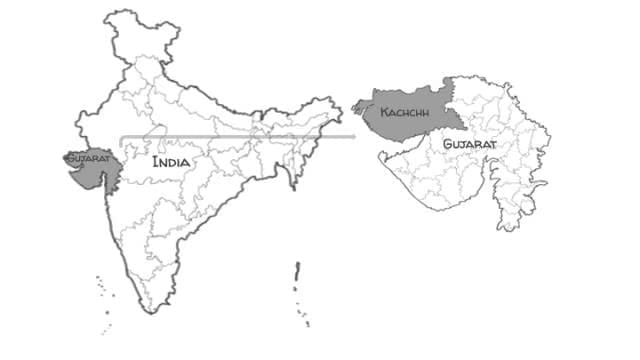 Why in News?
Why in News?
- The Rajasthan government is in the process of altering the boundaries of the Critical Tiger Habitat (CTH) within the Sariska Tiger Reserve. This initiative is aimed at facilitating the reopening of over 50 marble and dolomite mines that were previously closed due to their proximity to the reserve. The proposed boundary changes are currently under review, seeking a balance between conservation efforts and local economic development.
Key Takeaways
- The Critical Tiger Habitat is essential for the conservation of tiger populations.
- Proposed changes involve excluding approximately 48.39 square kilometres deemed degraded from the CTH.
- Resuming mining operations could generate significant revenue for the local economy.
- Environmental experts express concerns over the potential impact on tiger movement and internal connectivity within the reserve.
Additional Details
- Critical Tiger Habitat: These areas are vital for the survival and protection of tiger populations, with restrictions on industrial activities within a one-kilometre radius to minimize human interference.
- The proposal includes adding 90.91 square kilometres of quality habitat from the Sariska buffer zone to compensate for the areas excluded from the CTH.
- Allegations of corruption have surfaced regarding the boundary rationalization process, with mine owners claiming they were pressured to pay bribes for operational reinstatement.
- The Supreme Court is overseeing this process through a Central Empowered Committee (CEC), which is tasked with addressing boundary demarcation and illegal mining activities.
In summary, while the Rajasthan government's proposal aims to support local mining operations and economic growth, it raises significant environmental concerns regarding the conservation of the tiger population and the integrity of their habitat.
Rapid Detection of Nipah Virus
 Why in News?
Why in News?
- The Nipah virus poses a significant public health threat due to its high mortality rate and potential for widespread outbreaks. Recently, India has made a noteworthy advancement in combatting this virus with the development of a rapid test kit by the National Institute of Virology (NIV) in Pune. This portable kit can detect the Nipah virus in just a few minutes, which is particularly vital for high-risk regions such as Kerala and West Bengal, where outbreaks have been frequent.
Key Takeaways
- The Nipah virus is a zoonotic virus primarily transmitted from fruit bats to humans.
- India's NIV has developed a portable test kit that enhances rapid detection of the virus.
- There are no specific antiviral treatments or vaccines currently available for Nipah virus infection.
Additional Details
- Nipah Virus Overview: The Nipah virus is transmitted mainly from fruit bats to humans and can also be spread through contaminated food or direct human contact. Infected individuals may experience severe illnesses that range from mild respiratory symptoms to fatal encephalitis, with a mortality rate exceeding 50%.
- Recent Developments in Testing: The newly developed LAMP-based point-of-care test kit allows for immediate results without the need for laboratory facilities. This innovation is expected to significantly improve early detection and containment strategies in regions susceptible to outbreaks.
- Historical Context: The first recorded Nipah virus case in India was in West Bengal in 2001, with subsequent outbreaks occurring in 2007 and 2018. Kerala has faced repeated incidents, with a chilling 100% fatality rate noted during the 2007 outbreak.
- Transmission Dynamics: The Nipah virus can be transmitted through direct contact with infected animals or contaminated food. Notably, human-to-human transmission has been observed, particularly among caregivers and family members in India and Bangladesh.
- Symptoms and Diagnosis: Symptoms can range from asymptomatic to severe neurological issues, including fever, headaches, and respiratory problems. Accurate diagnosis relies on laboratory testing, such as RT-PCR and ELISA, due to the nonspecific early symptoms.
- Treatment and Prevention: Currently, there are no specific antiviral treatments or vaccines for Nipah virus. Management involves supportive care for severe cases, and preventive strategies include rigorous cleaning of pig farms and public health awareness campaigns.
- Research Efforts: NIV is collaborating with pharmaceutical companies to develop monoclonal antibodies and a potential indigenous vaccine aimed at improving treatment options and enhancing public health responses to outbreaks.
In summary, the rapid detection of the Nipah virus through innovative testing methods represents a crucial step toward controlling this lethal virus, particularly in regions that are prone to outbreaks. Continued research and development efforts are essential for improving treatment and prevention strategies.
Global Tobacco Epidemic Report
 Why in News?
Why in News?
- India has positioned itself as a frontrunner in tobacco control, as highlighted in the World Health Organisation’s Global Tobacco Epidemic report. The report emphasizes that India’s graphic health warnings on tobacco products are among the most effective worldwide, showcasing the country's commitment to public health and combating tobacco-related diseases.
Key Takeaways
- India's graphic health warnings cover 85% of cigarette packaging, one of the largest mandates globally.
- Daily adult smoking rates in India stand at 7%, with significantly higher usage among men compared to women.
- The WHO’s MPOWER framework outlines six crucial measures for tobacco control, which India is actively implementing.
Additional Details
- Graphic Health Warnings: These warnings are essential for educating consumers about the dangers of tobacco. The increase in size and prominence of these warnings since 2007 has significantly raised public awareness.
- Legislative Framework: India has passed laws banning smoking in indoor public spaces, with exceptions for designated smoking areas. Comprehensive regulations have also been established to restrict tobacco advertising across all media, including digital platforms.
- Challenges: Despite progress, challenges such as rising industry interference and low taxation on tobacco products persist, highlighting the need for ongoing efforts in tobacco control.
- Global Context: India’s tobacco control initiatives align with a global movement, wherein 110 countries implement graphic health warnings, protecting 62% of the world’s population.
In conclusion, while India has made significant strides in tobacco control, the ongoing prevalence of tobacco use indicates the necessity for continued vigilance and enhanced measures to protect public health.
Iran Suspends Cooperation With IAEA
 Why in News?
Why in News?
- On June 26, 2025, Iran's Parliament took a significant step by voting to suspend all cooperation with the International Atomic Energy Agency (IAEA). This decision arose in response to military strikes conducted by the US and Israel on Iranian nuclear facilities, intensifying concerns about nuclear proliferation amidst the ongoing Iran-Israel conflict.
Key Takeaways
- Iran’s Parliament voted to cease cooperation with the IAEA following US and Israeli military actions.
- The decision raises substantial concerns regarding nuclear proliferation and international oversight.
Additional Details
- IAEA Cooperation: The IAEA plays a crucial role in monitoring global nuclear programs. Iran had previously engaged with the IAEA under the Non-Proliferation Treaty (NPT), allowing inspections of its nuclear activities. Recent military strikes have fundamentally strained this relationship.
- Triggering Events: The immediate cause of Iran's suspension was US airstrikes on June 22, targeting three key nuclear sites, which followed Israeli attacks on June 13. Iranian officials condemned these actions as violations of sovereignty and highlighted failures in international nuclear oversight.
- Legislative Action: The National Security and Foreign Policy Committee in Iran approved the bill to halt cooperation with the IAEA, demanding security guarantees for Iranian nuclear facilities before any future engagement. Speaker Mohammad Bagher Ghalibaf emphasized that Iran’s nuclear program would advance more quickly.
- Restrictions on Oversight: If enacted, the legislation would severely limit the IAEA's ability to monitor Iran’s nuclear activities, including barring inspectors from facilities and halting the installation of surveillance equipment.
- Impact on Nuclear Monitoring: This suspension poses a significant setback to the nuclear monitoring framework established by the 2015 Joint Comprehensive Plan of Action (JCPOA). With Iran's patience wearing thin due to sanctions and military actions, the situation raises the risk of a proliferation crisis.
- Regional and Global Reactions: The IAEA's credibility is now under scrutiny, prompting calls for an emergency UN Security Council meeting from France and Germany. Meanwhile, Russia and China denounced Western military actions and urged for de-escalation, while Gulf Arab states expressed concerns over regional stability and potential arms buildups.
The situation remains critical as a ceasefire brokered by the US is still in effect. If the bill is implemented, IAEA inspectors may be expelled, leading to a complete blackout of Iran's nuclear activities and escalating fears of potential weaponization in the West.
Caste Census in Himachal Pradesh
 Why in News?
Why in News?
- The Government of India has announced the initiation of a comprehensive caste Census in Himachal Pradesh, scheduled to commence in 2026. This significant initiative aims to collect extensive data on the state's caste demographics, reflecting its diverse population. The Census will initially focus on the snow-bound regions, before expanding to the rest of the state in 2027, addressing the unique challenges faced by these areas due to their geographical conditions.
Key Takeaways
- The caste Census aims to provide detailed insights into the caste composition of Himachal Pradesh.
- Scheduled Castes (SCs) represent about 25% of the state's population, while Other Backward Classes (OBCs) make up 13.52%, and Scheduled Tribes (STs) account for 5.71%.
Additional Details
- Population Composition: Himachal Pradesh has a total population of approximately 77.56 lakh. The state recognizes 57 castes as SCs, with notable populations in districts like Kangra and Mandi. The Hattee community received ST status in 2023, adding complexity to the caste dynamics.
- Census Methodology: Conducted by state government employees, including teachers and anganwadi workers, the Census will involve training for data collection. Enumerators will use door-to-door surveys, employing both digital tools and paper forms for data gathering, with verification against official documents.
- Ongoing Legal Disputes: The ST status of the Hattee community is under judicial review, with some SC and OBC representatives contesting this classification, fearing it may undermine benefits for marginalized groups. The Himachal Pradesh High Court has imposed a stay on the notification, with a hearing set for July 2027, which could affect the Census process.
- Political Implications: The caste Census may influence state politics differently; while some analysts believe it may not significantly alter political dynamics, others suggest it could reshape welfare policies. Of the 68 Assembly constituencies, 17 are reserved for SCs and 3 for STs, indicating the potential for caste to play a role in electoral politics.
- Expert Opinions: Political analysts are divided on the Census's impact, with some viewing it as a valuable source of socio-economic data without altering the political landscape, while others, like Onkar Chand Sharma, believe it could significantly affect political dimensions due to being the first comprehensive caste enumeration since 1931.
This upcoming Census marks a crucial step in understanding the socio-economic status of different caste groups in Himachal Pradesh, potentially influencing future welfare policies and political strategies.
Corporate Wilful Defaulters in India
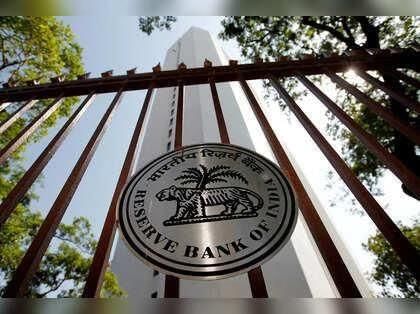 Why in News?
Why in News?
- The issue of wilful default in India has become increasingly significant, with the Reserve Bank of India (RBI) identifying 2,664 corporates as defaulters as of March 2024. Collectively, these companies owe a staggering Rs 1,96,441 crore to the banking sector, indicating a troubling trend in the financial stability of India's corporate landscape.
Key Takeaways
- The number of wilful defaulters rose from 2,154 in March 2020 to 2,664 in March 2024.
- A total of Rs 1,96,441 crore is owed to banks by these corporates.
Additional Details
- Wilful Default: This term refers to situations where borrowers fail to repay loans despite being financially capable. It often involves the misallocation of funds borrowed for specific projects.
- The RBI states that wilful defaults may include misappropriating assets secured against loans or not utilizing borrowed funds for the intended purpose.
- The rising number of defaulters poses risks to the banking sector, potentially leading to liquidity challenges and reduced lending capacity.
- Investigations by the Serious Fraud Investigation Office (SFIO) and the Enforcement Directorate (ED) are ongoing, with recent arrests related to major defaulters.
- Legal proceedings are being conducted at the National Company Law Tribunal (NCLT), impacting companies facing bankruptcy processes.
- From March 2020 to March 2024, the number of defaulters increased by 23.6%, and the total amount owed rose by 28.4%, highlighting concerns about corporate governance and financial accountability.
- Regulatory bodies are encouraged to enhance enforcement mechanisms and scrutinize loan disbursements rigorously to counter these trends.
- Public awareness campaigns on corporate governance are essential for mitigating risks associated with wilful defaults.
In summary, the growing issue of wilful defaulters in India not only threatens the financial stability of the banking sector but also raises critical questions about corporate governance and accountability. Addressing these challenges through stringent regulatory measures and public awareness is crucial for safeguarding the integrity of the financial system.
Bihar’s First Nuclear Power Plant
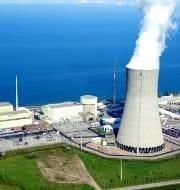 Why in News?
Why in News?
- Bihar is poised to become one of the pioneering states in India to set up a nuclear power plant. This initiative aligns with the nation's new Nuclear Energy Mission, coming at a crucial time ahead of the assembly elections in Bihar.
Key Takeaways
- The Nuclear Energy Mission aims to broaden the scope of clean and reliable nuclear power across India.
- The government has earmarked Rs 20,000 crore for this mission in the Union Budget for 2025-26.
- The goal is to establish at least one nuclear power plant in each state to ensure energy security amid a rising demand for electricity.
Additional Details
- Small Modular Reactors (SMRs): The nuclear plant in Bihar will utilize SMR technology, known for its flexibility and cost-effectiveness compared to traditional reactors. These reactors can be deployed in smaller grids and are considered safer due to their advanced design.
- The establishment of a nuclear plant is expected to stabilize the electricity supply in Bihar, addressing historical challenges in power supply and infrastructure.
- Additionally, the Centre has approved a 1,000 MW battery storage project in Bihar to enhance grid stability and support renewable energy integration, with a viability gap funding of Rs 18 lakh per MW.
The government has also outlined a comprehensive power vision for 2035 that includes various energy projects—thermal, solar, wind, storage, and nuclear. This focus on advanced nuclear technology reflects a broader strategy to diversify India’s energy mix and meet the growing electricity demand.
Skills for the Future Report
 Why in News?
Why in News?
- The report titled Skills for the Future – Transforming India’s Workforce Landscape was recently released by the Institute for Competitiveness. It emphasizes the need for aligning education and vocational training with the evolving demands of the industry, drawing on data from the Periodic Labour Force Survey (PLFS) to provide a comprehensive analysis of educational attainment and occupational distribution in India.
Key Takeaways
- 88% of the workforce is engaged in low-competency jobs.
- Only 10-12% of the workforce holds high-competency roles.
- Five key sectors have been identified for vocational training.
- High-potential regions for vocational training have been pinpointed based on a Competitiveness Framework Analysis.
- The report advocates for a data-driven approach to skill development.
Additional Details
- Key Sectors for Vocational Training:The report identifies five critical sectors:
- Information Technology and IT-enabled Services (IT and ITeS)
- Textile and Apparel
- Electronics
- Healthcare and Life Sciences
- Beauty and Wellness
- High-Potential Regions: Five regions identified through the Competitiveness Framework Analysis are crucial for targeted resource allocation and training efforts aimed at developing a skilled workforce to meet industry demands.
- Data-Driven Insights: The report emphasizes the necessity for a dedicated data collection system to enhance understanding of skill requirements, supporting evidence-based reforms and continuous monitoring.
- Recommendations: Suggested multifaceted interventions include creating a robust employability index and incentivizing industries to hire from a skill-certified talent pool, emphasizing market-aligned training programs.
- Informal Learning: The report highlights the importance of recognizing informal and experiential learning, advocating for a broader approach to skilling that goes beyond formal education to include various learning pathways.
In conclusion, the Skills for the Future report provides essential insights into the current skills landscape in India, highlighting the urgent need for educational reforms that align with industry needs to build a future-ready workforce.
Genetic Ancestry of Modern-Day Indians
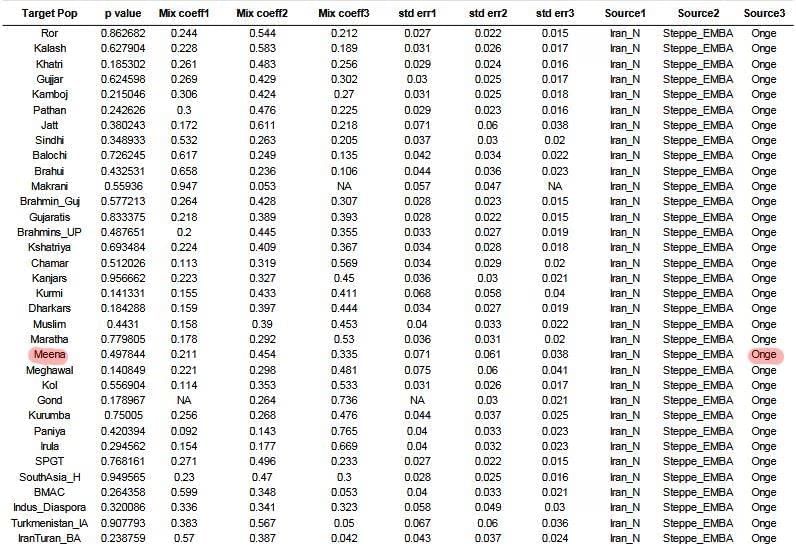 Why in News?
Why in News?
- Recent findings shed light on the genetic history of modern-day Indians, suggesting that they are likely descendants of three significant ancestral groups associated with Iranian and Central Asian cultures. This research, published in the journal Cell, highlights the intricate patterns of migration and social practices that have influenced India's genetic diversity over millennia.
Key Takeaways
- The study identifies three primary ancestral groups contributing to the genetic makeup of contemporary Indians: Neolithic Iranian farmers, Eurasian Steppe pastoralists, and South Asian hunter-gatherers.
- Initial migration to India is traced back to approximately 50,000 years ago from Africa, forming the genetic foundation of Indian populations.
- Genetic contributions from Neanderthals and Denisovans account for an additional 1-2% of the genetic composition of modern Indians.
Additional Details
- Genetic Variation Study: The research analyzed genetic data from 2,762 individuals across 18 Indian states, capturing a wide range of geographic and social backgrounds, which includes urban and rural populations as well as various linguistic groups.
- The study successfully reconstructed about 50% of the Neanderthal genome and 20% of the Denisovan genome from Indian individuals, enhancing understanding of how these archaic humans influenced immune functions and adaptations in contemporary populations.
- Homozygosity and Genetic Health: Elevated homozygosity was observed in the Indian population, indicating a higher likelihood of inheriting identical genetic variants from both parents, which is more pronounced than in East Asians and Europeans. This can lead to an increased risk of recessive diseases and congenital disorders.
- Implications of Endogamy: The study highlights a significant trend towards endogamy in India, where marriages predominantly occur within communities. This practice poses risks for genetic diversity and health, potentially increasing the prevalence of genetic disorders through the concentration of certain genetic variants.
- Future Research Directions: This research opens new avenues for exploring India's genetic history, which can aid in addressing public health challenges related to genetic diseases. It also prompts further investigation into how historical migrations influenced not only genetic but also cultural and linguistic diversity in the region.
In conclusion, understanding the complex ancestry of modern Indians is crucial for both genetic research and public health, providing insights that can inform future studies and health strategies.
Kerala Tops MEE Ranking
 Why in News?
Why in News?
- On June 30, 2025, Kerala was recognized for its outstanding management of national parks and wildlife sanctuaries. In the latest Management Effectiveness Evaluation (MEE) conducted by the Union Ministry of Environment, Forest and Climate Change for the period 2020-2025, Kerala has shared the top position with Chandigarh, both receiving high ratings for their conservation achievements.
Key Takeaways
- Kerala and Chandigarh achieved top rankings in the Management Effectiveness Evaluation.
- Keralas mean score was 76.22%, while Chandigarh scored 85.16%.
Additional Details
- Management Effectiveness Evaluation (MEE): This evaluation assesses the performance of national parks and wildlife sanctuaries across India, focusing on management practices, habitat conditions, and species monitoring. A total of 438 protected areas were evaluated.
- Top Scoring Protected Areas: Eravikulam National Park and Dachigam National Park each scored 92.97%, making them the highest-rated protected areas. Other notable mentions include Mathikettan Shola National Park and Chinnar Wildlife Sanctuary, which ranked fifth and sixth respectively.
- Challenges Faced: Several protected areas in Kerala encounter challenges, such as Mangalavanam Bird Sanctuary facing urban pollution and management issues, Idukki Wildlife Sanctuary experiencing pressure from feral cattle, and Wayanad Wildlife Sanctuary dealing with human-animal conflicts.
- Recommendations for Improvement: The report suggests relocating tribal hamlets to minimize conflicts, controlling invasive species, and enhancing monitoring protocols. Additionally, integrating the Chedaleth range with Wayanad Wildlife Sanctuary is advised to secure elephant corridors.
- Significance of Eravikulam National Park: This park is celebrated for its biodiversity, housing the Nilgiri Tahr and unique flora like the Neelakurinji, which blooms every 12 years. It represents one of the largest Shola-grassland biomes in the Western Ghats, recognized as a UNESCO World Heritage Site.
- Future Directions for Conservation: Kerala plans to improve eco-tourism and engage local communities in conservation efforts, while also promoting collaborations with scientific institutions and NGOs to enhance ecological monitoring and awareness.
In summary, Kerala's performance in the Management Effectiveness Evaluation highlights its successful conservation strategies, while also pointing out areas that require attention and improvement. The state is committed to enhancing its management practices and engaging the community to ensure the sustainability of its rich biodiversity.
Pakistan’s Climate Vulnerability in 2025
 Why in News?
Why in News?
- Pakistan is currently facing immense challenges due to the impacts of climate change. Recent flash floods have tragically resulted in the loss of at least 32 lives. The National Disaster Management Authority has raised alerts concerning potential glacial lake outburst floods and urban flooding, further complicating the situation. Notably, Pakistan has been ranked as the most climate-vulnerable country in the world, bearing significant social and economic costs as a result.
Key Takeaways
- Severe flash floods have caused fatalities and prompted disaster alerts.
- Pakistan ranks as the most climate-vulnerable nation globally.
- Geographic factors significantly contribute to the country's vulnerability.
Additional Details
- Geographic Factors: Pakistan is home to over 13,000 glaciers, which are melting due to global warming, increasing flood risks. The country also faces frequent heatwaves and unpredictable rainfall patterns, leading to both floods and droughts, a challenge shared with much of northern India.
- Natural Disasters: In addition to climate change, Pakistan is susceptible to natural disasters such as earthquakes. The interplay between geological instability and climate-related hazards heightens risks for the population.
- Human Factors: Ineffective management and poor policy decisions exacerbate the crisis. Recent events reveal that many deaths during rain-related incidents can be attributed to inadequate infrastructure, such as roof collapses in Punjab. Delays in rescue operations in regions like Swat have sparked public protests.
- Urbanisation Challenges: Rapid urban migration has resulted in the expansion of slums, with over 50% of the urban population residing in informal settlements known as katchi abadis. Poor urban planning leads to water-logging and increased vulnerability to floods, while the heat island effect is intensified by high population density in urban areas.
- Air Quality Issues: Urban areas are experiencing rising air pollution due to factors such as inefficient energy use, increased vehicle numbers, industrial activities, and open burning of waste, all of which adversely affect public health.
- Government Response: Leaders have criticized the government's slow response to these pressing climate issues. The former Climate Change Minister emphasized the urgent need for action, while the government has sought international aid, particularly green funds, to tackle climate challenges.
- Financial Needs: Pakistan is calling for increased financial assistance to address climate change. The International Monetary Fund has approved a Resilience and Sustainability Facility of approximately USD 1.4 billion, but the country estimates it will require around USD 200 billion for mitigation efforts by 2030.
In conclusion, Pakistan's climate vulnerability is underscored by a combination of geographic, natural, and human factors. Addressing these challenges requires urgent and comprehensive action from both the government and international partners to mitigate the impacts of climate change and improve resilience.
|
201 videos|842 docs|2245 tests
|
FAQs on Weekly Current Affairs (22nd to 30th June 2025) - General Test Preparation for CUET UG - CUET Commerce
| 1. What is the significance of the Fossil Fuel Finance Report in addressing climate change? |  |
| 2. How has the geopolitical tension between the US and Iran affected global security regarding nuclear facilities? |  |
| 3. What is the EMM-negative blood group system, and why is it important in medical science? |  |
| 4. What measures are being taken for the rapid detection of the Nipah virus, and why is it critical? |  |
| 5. What are the implications of a caste census in states like Himachal Pradesh for social justice? |  |





















